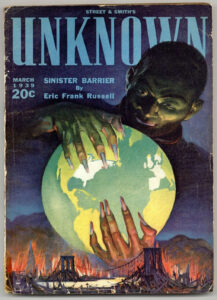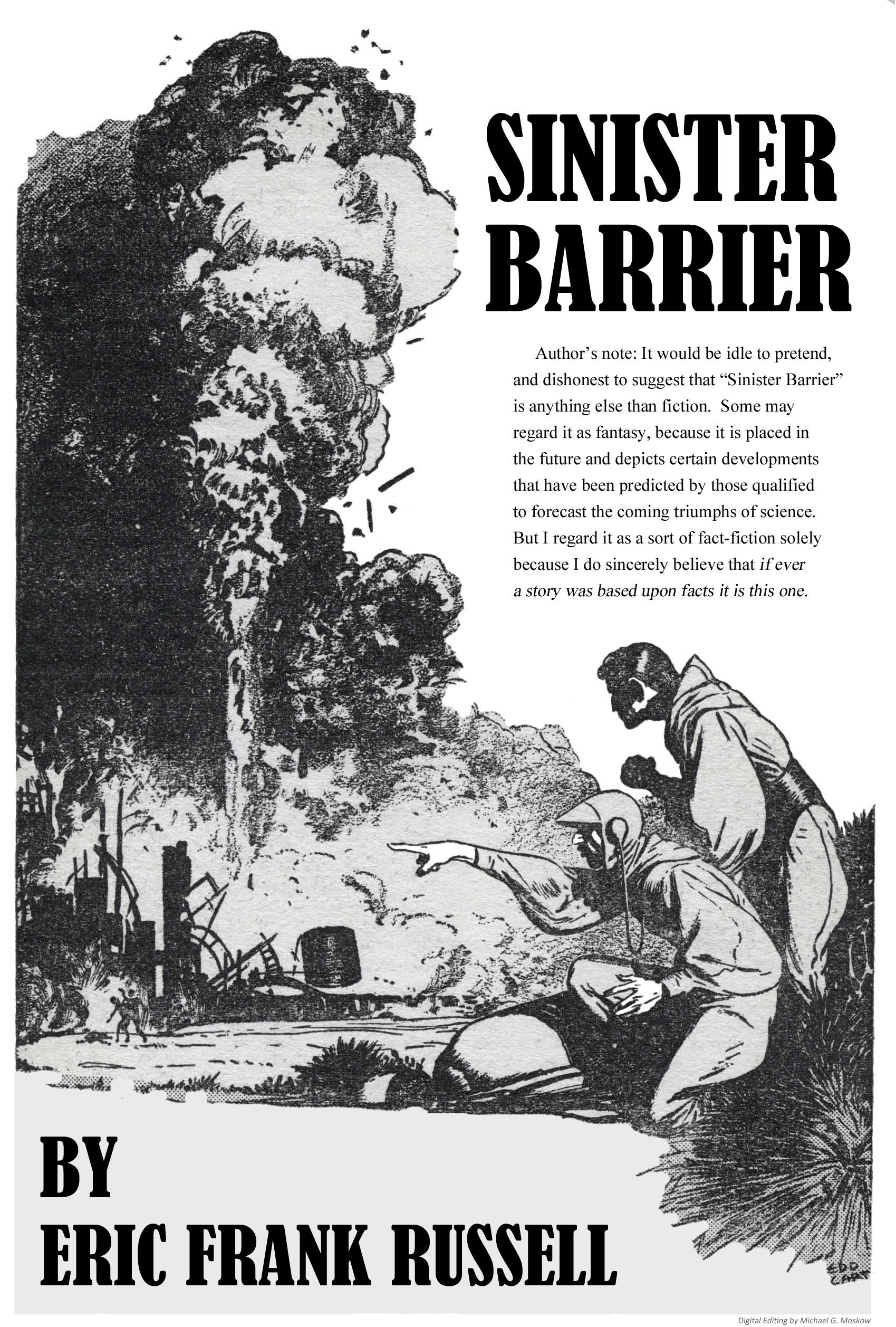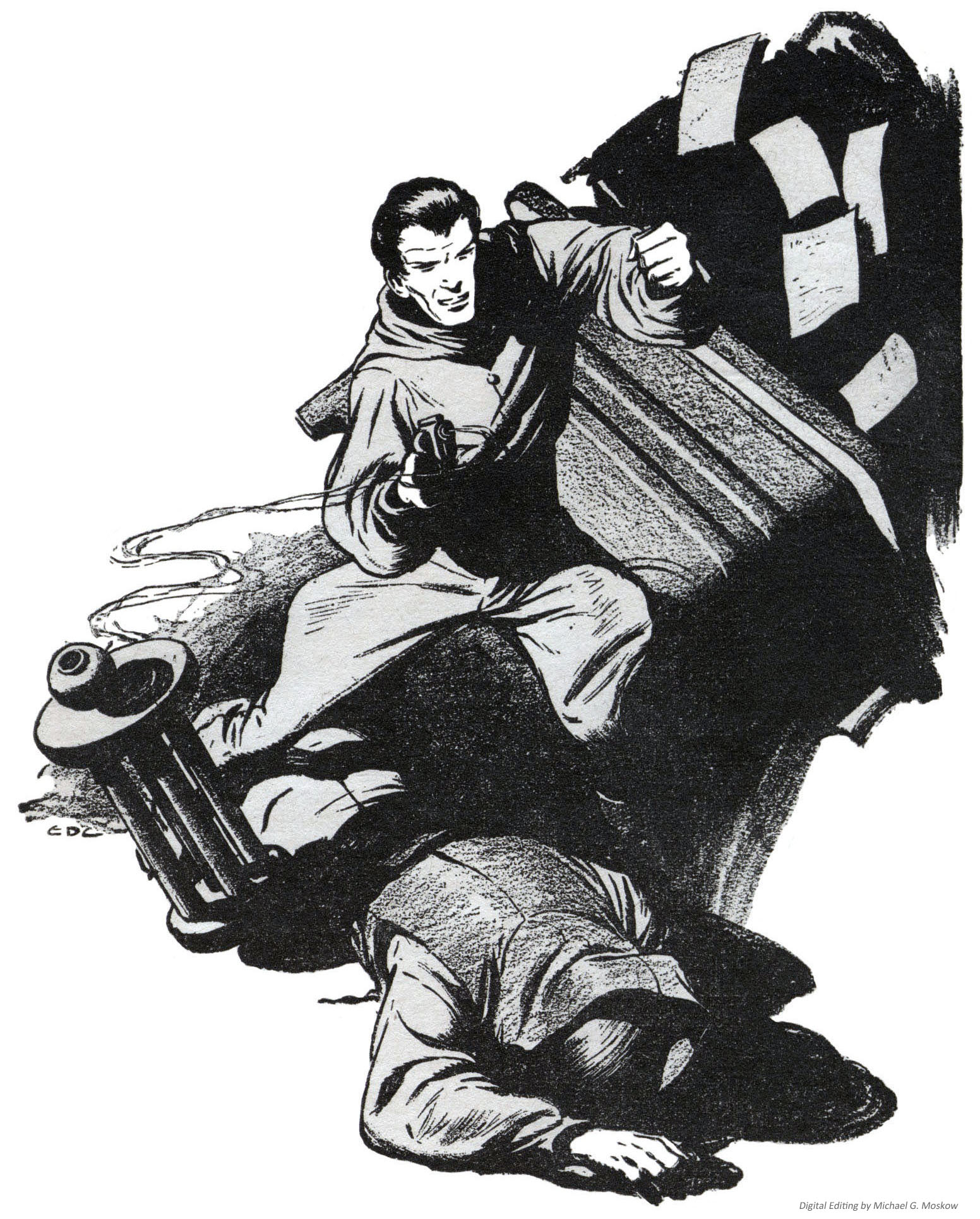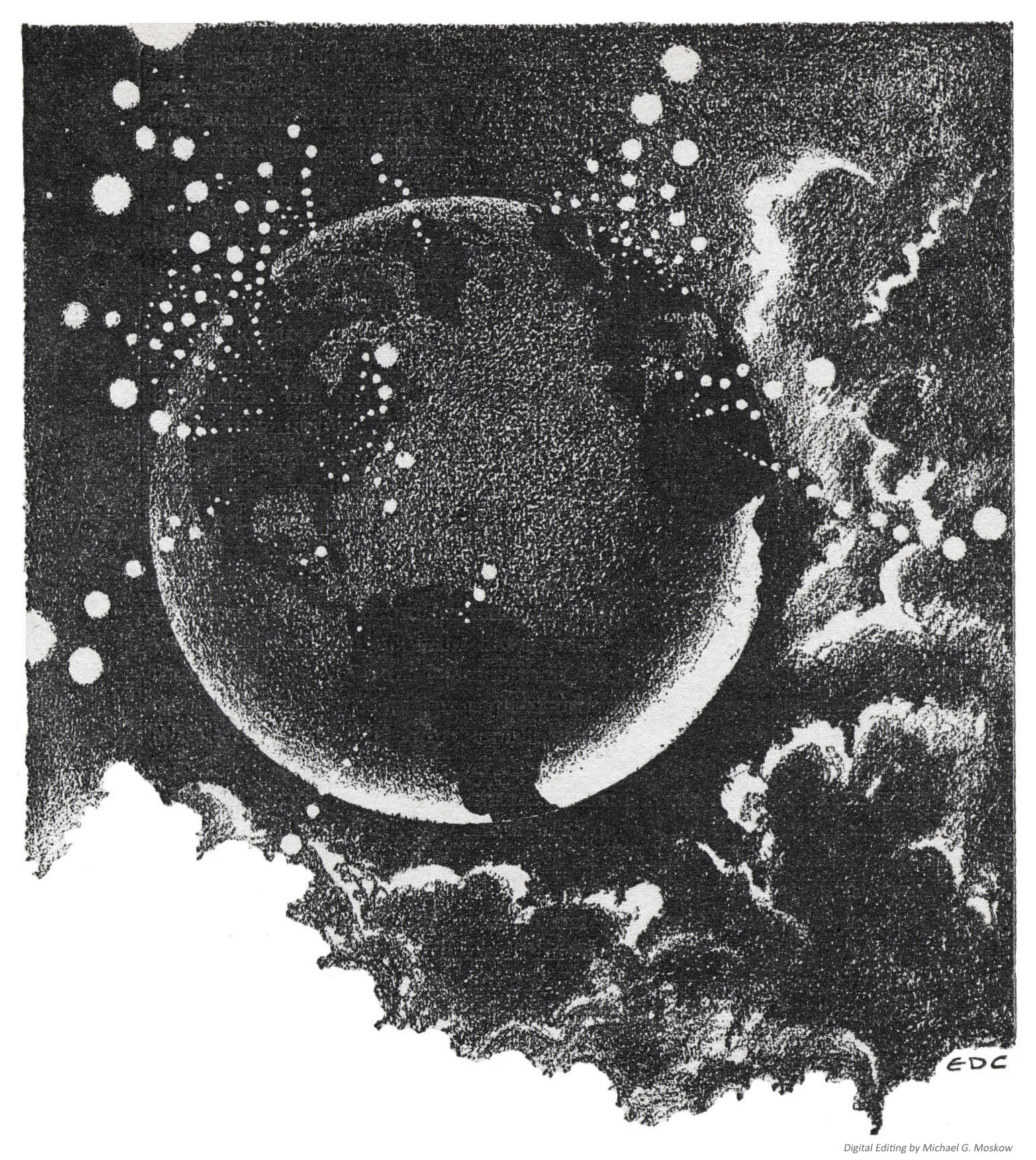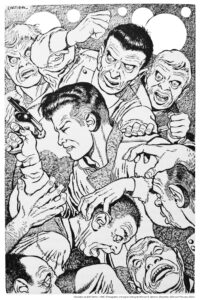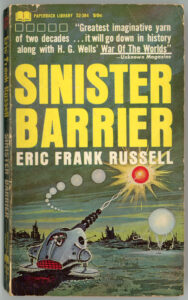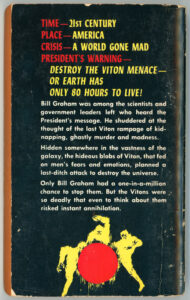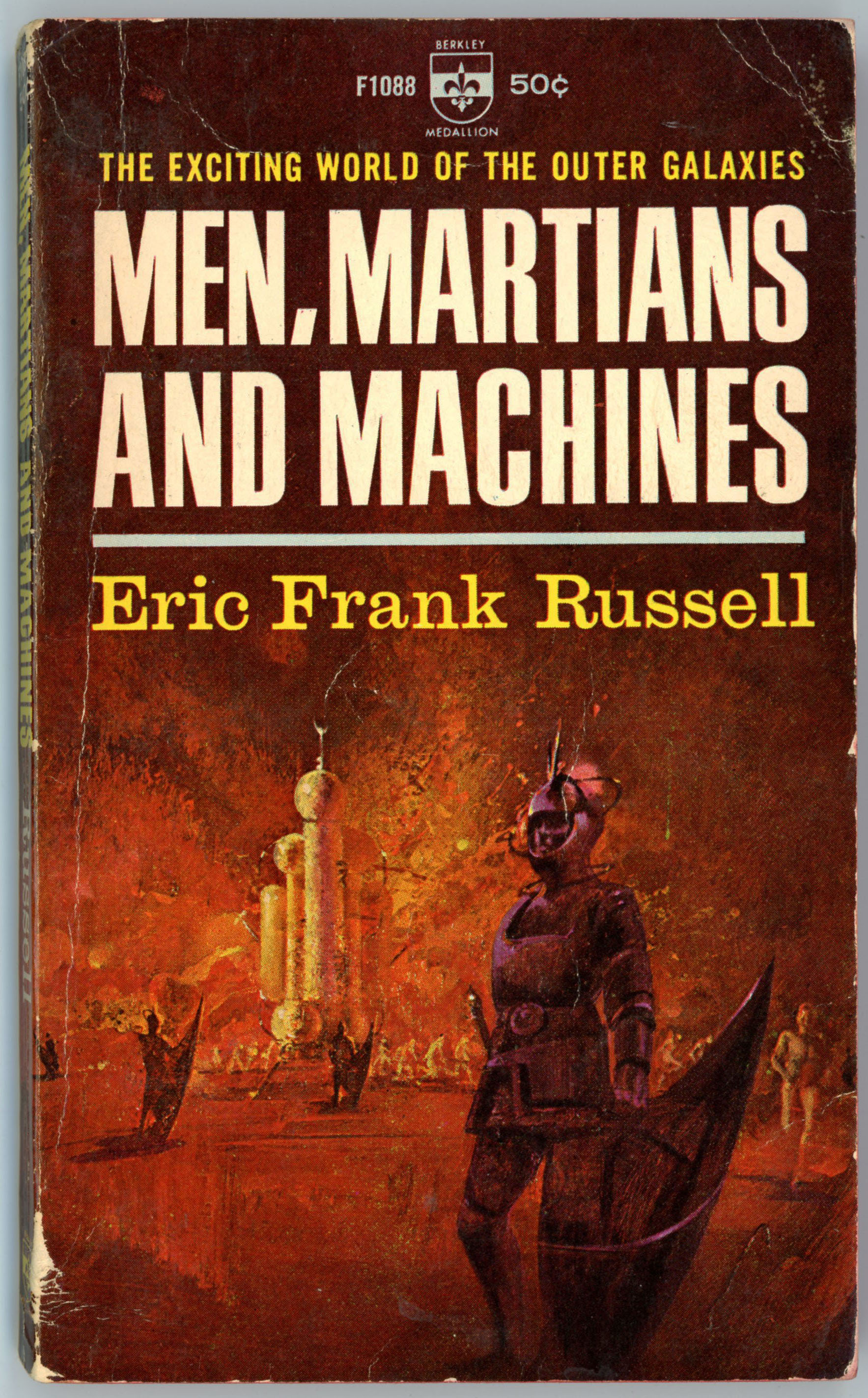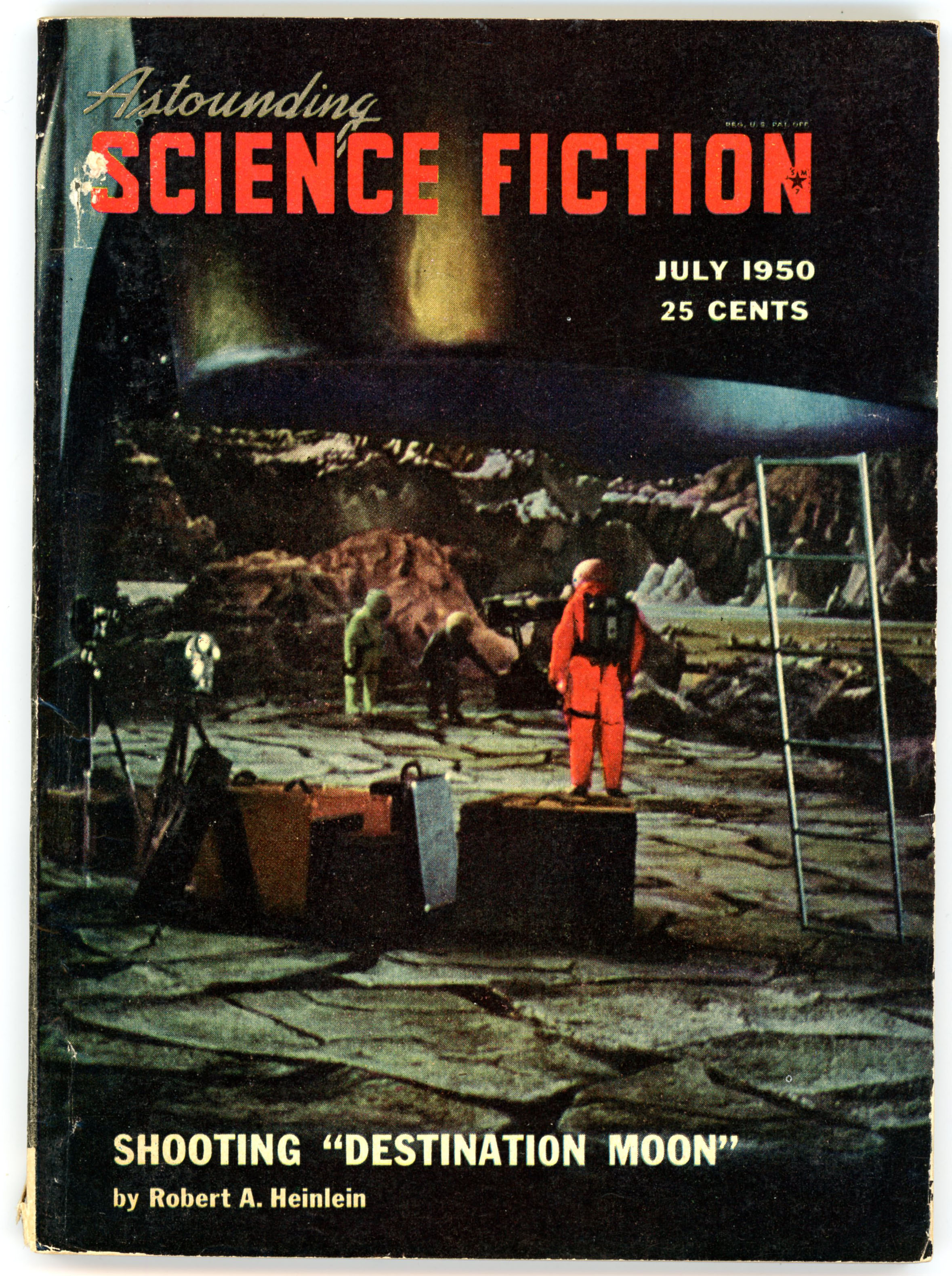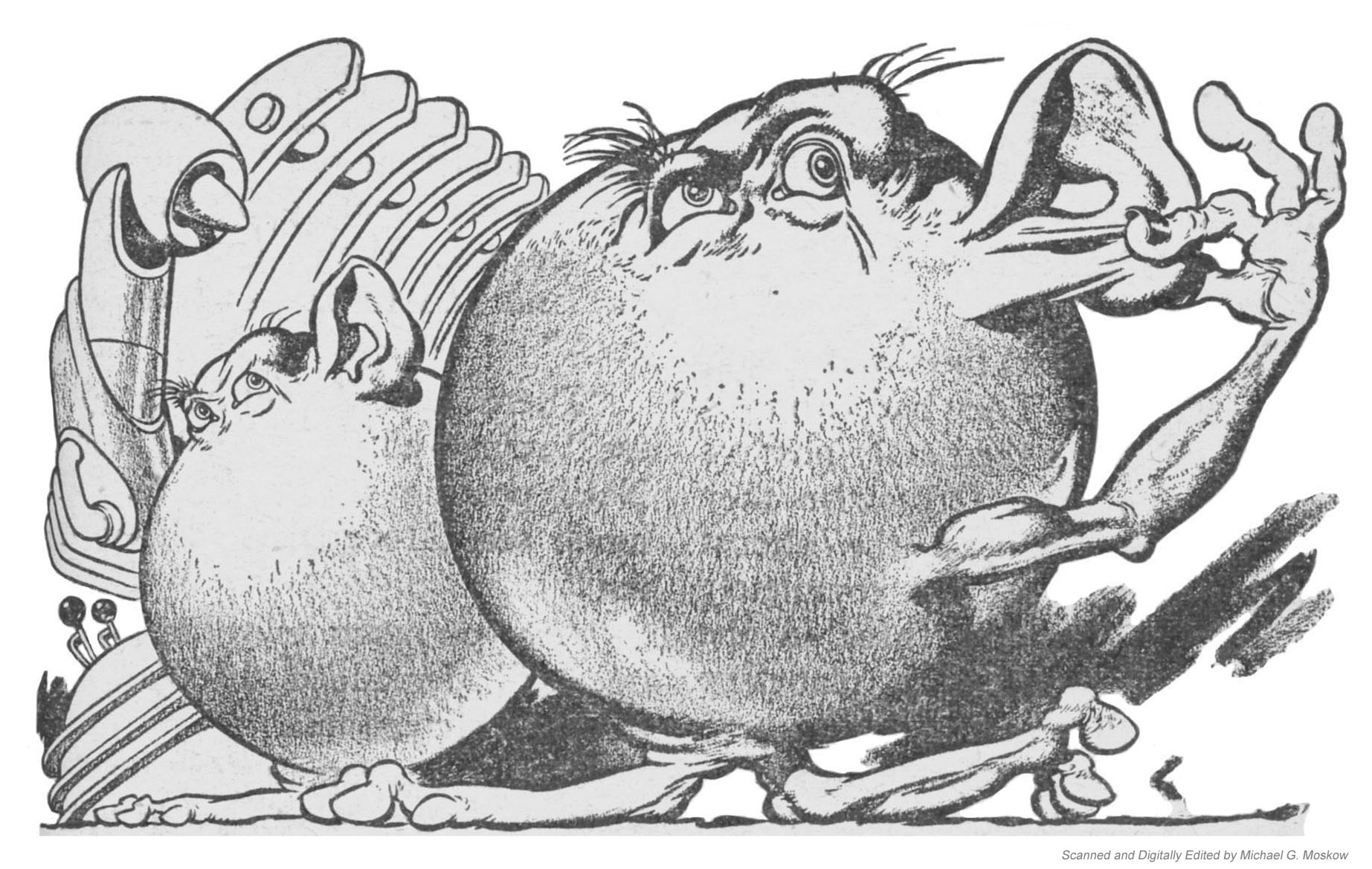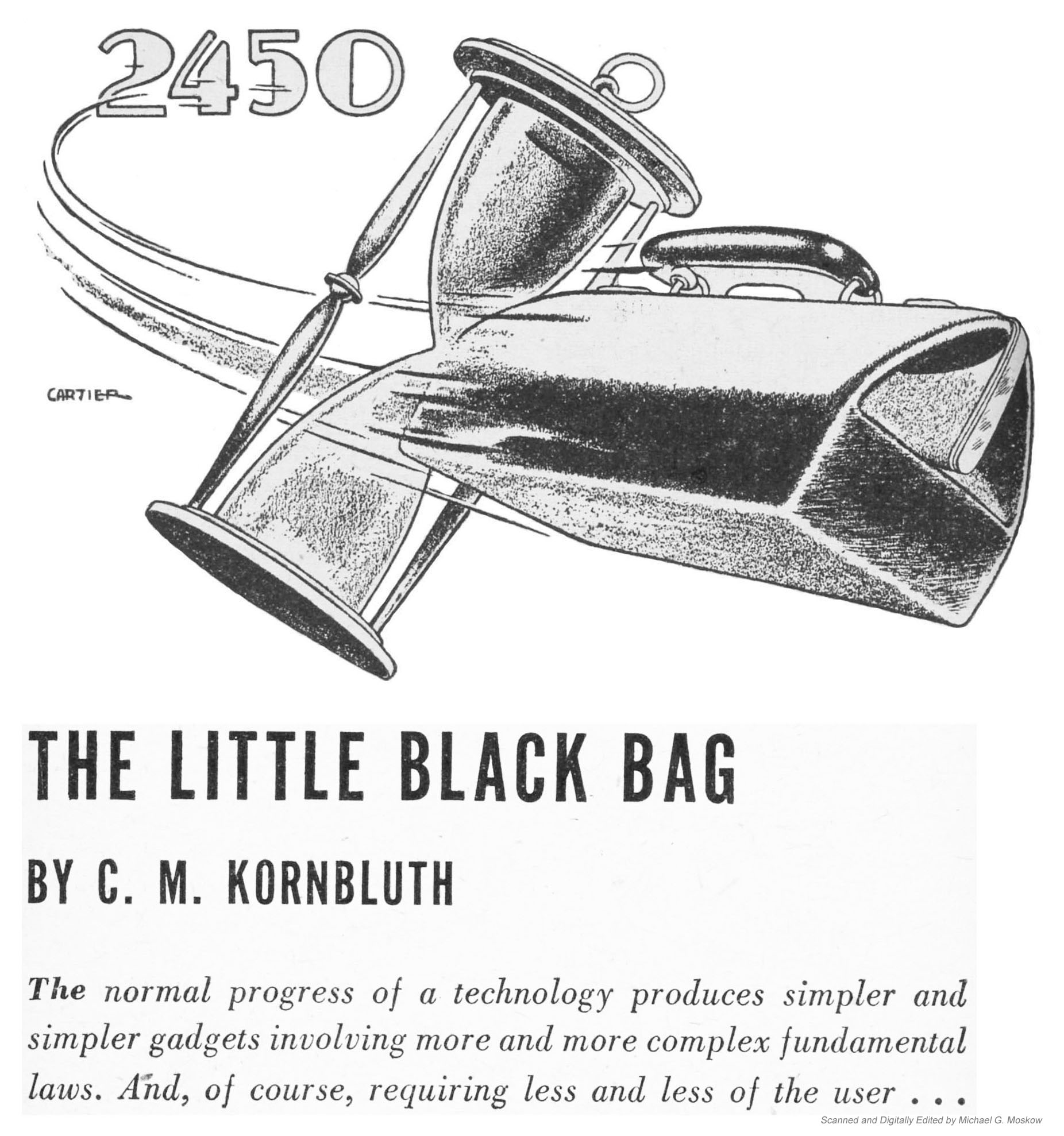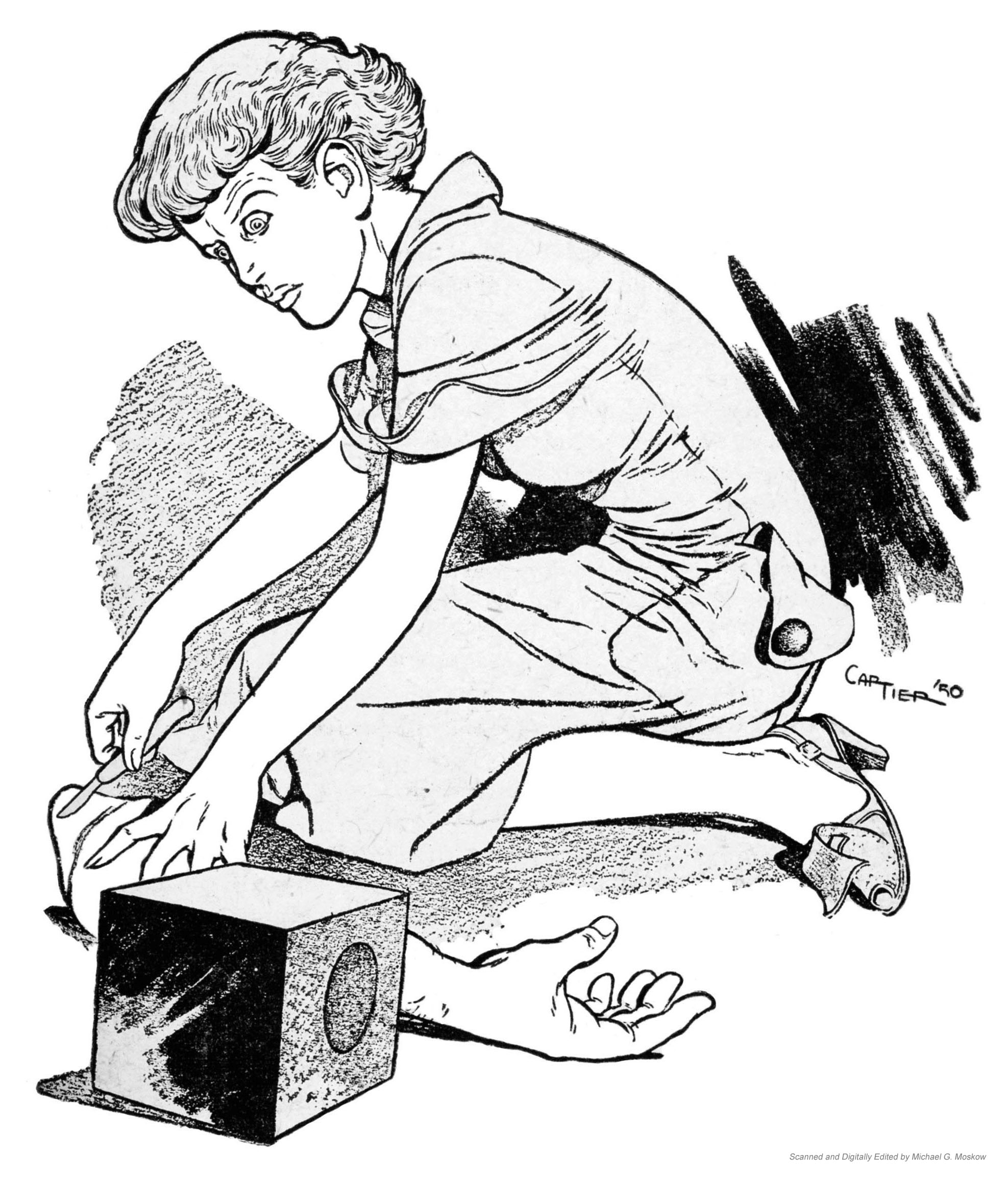(Minor update: I’ve at last acquired a much nicer copy of the May, 1952 issue of Astounding than that originally featured in this post. Looks far better than the original.)
The year, 1952.
The month, May.
The magazine, Astounding Science Fiction.
The art, arty. (Okay, a little alliteration. I can’t think of a more clever way to phrase it, at the moment!)
The magazine featured illustrations by H.R. (Henry Richard) Van Dongen and G. Pawelka, the former’s work comprising interior art for Chad Oliver’s “Blood’s a Rover”, Eric Frank Russell’s “Fast Falls the Eventide”, Mark Clifton’s “What Have I Done?”, and Brian Parker’s “Half the Victory”. Pawelka’s work accompanied the second installment of Cyril Judd’s (Cyril M. Kornbluth and Judith Merrill) “Gunner Cade”, just as it did in the magazine’s April issue.
And, the artists’ styles of art were very, very (did I say very?) different: Van Dongen’s characterized by intricacy, delicacy, subtlety of shading, and a level of detail and imagination strongly akin to the work of Edd Cartier. (For a great example, see this illustration for Isaac Asimov’s “The Currents of Space“, from the December, 1952 Astounding.) Pawelka’s art is different. Above all, it’s bold, with a primary emphasis on contrasts between light and dark, and, far less attention to detail.
While both styles work in their own fashion, I like that of Van Dongen far more.
So. “RERMA WILL BE DESTROYED”. Here’s Van Dongen’s cover for Chad Oliver’s “Blood’s A Rover”. Not that science-fictiony in appearance (no wobots robots, monsters, or space damsels here), it still “works” – conveying shock, fear, and contemplation – but it just doesn’t have the “oomph” of his interior work…
____________________
 ____________________
____________________
…an example of which – one of Van Dongen’s two illustrations (this one from page 59) accompanying Eric Frank Russell’s “Fast Falls the Eventide” – appears below. It’s a Zelamite, the dominant and obviously sentient life form of the planet Zelam. This illustration also appears on page 91 of Brian Ash’s Visual Encyclopedia of Science Fiction.
To give some perspective, first, a quote from Russell’s story:
“Zelam,
a single planet located on the fringe of the known,
reference numbers and coordinates not yet filed.
Recent contact.
Mass I.
Civilization type-J.
Dominant life form is reptilian as shown.”
They had a faint resemblance to erect alligators, though Melisande did not know it.
All of her own planet’s lizardlike species had vanished a million years ago.
There were now no local forms to which she could liken these horny-skinned,
long-jawed and toothy Zelamites.
By the standards of the dim past they were appallingly ugly;
but by the standards of her especial planet and her especial era they were not ugly.
They were merely an individualistic aspect of the same universal thing which is named Intelligence.
____________________
And herewith, a Zelamite! Great use of texture to depict scales on the creature’s arm and hand. Neat hat. Looks dangerous, but he’s really not. (I added color to his eye to spice up the image just a tad.)
 Z e l a m i t e
Z e l a m i t e
____________________
Van Dongen did a great job in depicting a reptilian species that superficially appears to be threatening, yet on a closer look is actually benign and civilized, paralleling this passage in Russell’s text:
There was a small Zelamite deputation to meet her.
The news of her coming having been received a few days before.
They were bigger than she had expected
for the screen on which she had first met them had given no indication of relative size.
The shortest of them towered head and shoulders above her,
had sharp-toothed jaws the length of her arm
and looked as if he could cut her in half at one savage snap.
The largest and oldest of the group,
a heavily-built and warty-faced individual,
came forward to meet her as the others hastened to pick up her bags.
“You are the one named Melinsande?”
“That’s me,” she admitted, smiling at him.
He responded with what looked remarkably like a threatening snarl.
It did not mislead her in the least.
Her kind had learned a thousand centuries ago
that those with different facial contours and bony structure perforce must have different ranges of expressions.
She knew that the alarming grimace was nothing but an answering smile.
The tone of his voice proved it as he went on.
“We are pleased to have you.”
His orange-colored eyes with their slot-shaped pupils studied her for a moment
before he added in mild complaint,
“We asked for a hundred and hoped to get ten, perhaps twenty.”
“More will come in due course.”
“It is to be hoped so.”
________________________________________
So, as I was completing this post, Mr. Zelamite reminded me of some-thing… Er, some-one... Er, some-it…else: The un-named Gorn starship commander from the Star Trek episode Arena (inspired by Fredric Brown’s “Arena“, and visualized by Marvel Comics in 1973, here). As seen in this image from AlphaCoders…

Then again, there’s always time for a reunion, as in the Shatner versus Gorn Trailer for “Star Trek: The Video Game”, at Bandai Namco Entertainment America.
____________________
But then, here’s Lady Gorn and Captain Kirk, as imagined by Kevin Keele…

Hmmmph! …Well!
There’s only one word for that.
Okay. Two words, actually:
“Oh, my!”
____________________
Some Stuff to Read and Look At…
Chad Oliver…
…at Wikipedia
…at Internet Speculative Fiction Database
…at Center for the Bibliography of Science Fiction and Fantasy, Cushing Library, Texas A&M University (archive.today Web Page Capture)
Henry Richard Van Dongen…
…at Artnet
…at The Encyclopedia of Science Fiction
…at Pulp Artists
(the) Gorn…
…at Wikipedia
…at MemoryAlpha
(Lady) Gorn contemplates Captain Kirk!…
…at Be Awesome (Kevin Keele)
And, A Book
Ash, Brian (editor), The Visual Encyclopedia of Science Fiction, Harmony Books, New York, N.Y., 1977
______________________________
As originally displayed in this post…

(This is my own copy. It’s a little bit chipped, somewhat worn, and otherwise (*eye-roll*) pencil-marked. I’m really gonna’ have to get an issue in better condition. In the meantime, better a so-so copy than no copy at all!)
August 27, 2021 – 111









